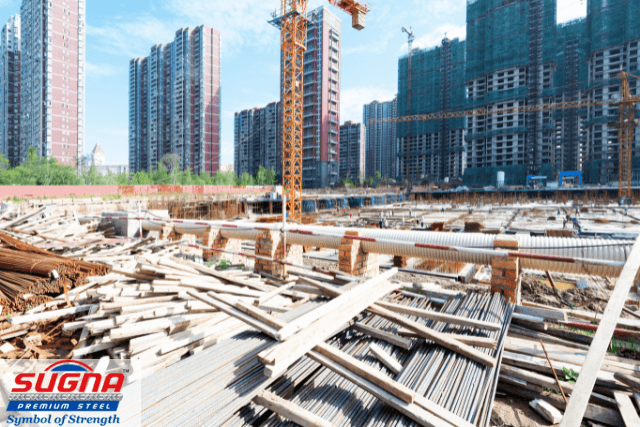In the vast expanse of the construction universe, different regions come with their unique challenges. Cold climates, in particular, pose significant concerns when it comes to infrastructure durability and stability. Enter TMT bars, particularly the steel variants, offering a robust solution to these chilly predicaments. This piece unravels the impeccable performance and myriad benefits of using TMT bars in regions that often find themselves under a frosty blanket.
Performance and Benefits of TMT Bars in Cold Climates

1. Unraveling the Mystery: What are TMT Bars?
Thermomechanically Treated (TMT) bars are a staple in modern construction. Characterized by their incredible tensile strength and flexibility, these bars derive their properties from a unique manufacturing process. Essentially, they’re high-strength steel bars with unparalleled bonding capabilities with concrete, further augmented by their innate resistance to corrosion.
2. Challenges of Cold Climates for Constructions
Cold climates present a plethora of concerns:
- Thermal Stress: Fluctuating temperatures can lead to repeated contraction and expansion of materials.
- Corrosion: Melting snow can lead to water seepage, increasing risks of rust and corrosion.
- Brittleness: Many materials become more brittle and susceptible to cracking in lower temperatures.
3. Why TMT Bars Shine in the Cold
3.1 Exceptional Tensile Strength
TMT bars, especially the steel variants, exhibit high tensile strength, making them resistant to the thermal stresses that come with temperature variations.
3.2 Ductility
One of the hallmarks of TMT bars is their ductility. Even in frigid temperatures, these bars retain their flexibility, making them less prone to snapping or breaking under pressure.
3.3 Corrosion Resistance
The unique design and treatment of TMT bars render them resistant to corrosion, a pivotal trait in areas where melted snow can be a recurring issue.
| Cold Climate Challenge | How TMT Bars Respond |
|---|---|
| Thermal Stress | High tensile strength withstands contraction and expansion |
| Material Brittleness | Retained flexibility reduces breakage risks |
| Corrosion | Inherent resistance ensures longevity |
4. Real-World Applications: TMT Bars in Frosty Terrains
From the chilly landscapes of Scandinavia to the alpine regions of the Himalayas, TMT bars have been integral in various constructions, be it residential complexes, bridges, or public infrastructure. Their ability to stand firm against the adversities of cold climates makes them the preferred choice for architects and builders alike.
5. Bringing in the Experts: The SugnaTMT Advantage
In the world of construction, especially in challenging climates, expertise can be the difference between lasting infrastructures and those that falter. Collaborating with seasoned players like SugnaTMT ensures not just high-quality steel TMT bars but also insights drawn from years of industry experience. Their commitment to quality and sustainability positions them as a valuable partner in cold climate construction endeavors.
6. Conclusion
Cold climates, with their myriad challenges, require materials that don’t just endure but excel. TMT bars, with their impressive array of features, emerge as the unsung heroes in these frosty landscapes. Their strength, flexibility, and corrosion resistance ensure that infrastructures remain robust and durable, regardless of the chill in the air. As we brace ourselves for a future where construction challenges continue to evolve, one thing remains certain – TMT bars will remain an indispensable ally, come rain, shine, or snow.

